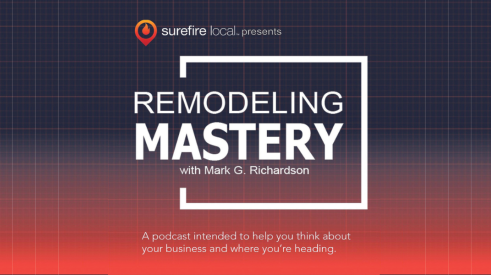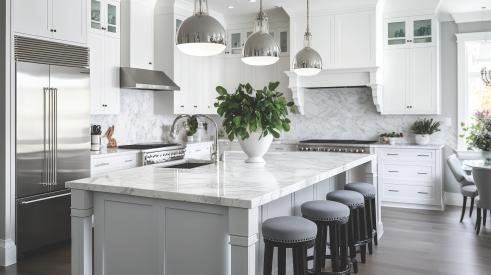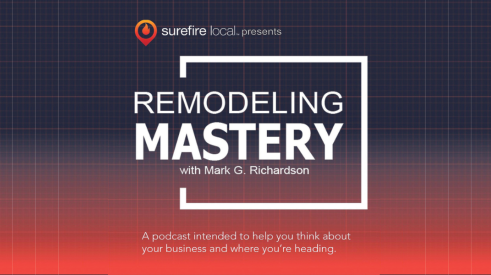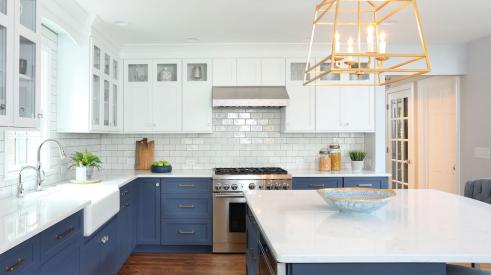A buddy of mine calls and asks if I can go visit with his daughter. “She needs a roof,” he says.
The daughter is divorced, single, early 40s, and she’s already met with one company. A canvasser knocked on her door and arranged for a salesperson to come out. The salesperson started at $50,000—it’s a 3,500 square foot roof—and after two and a half hours dropped the price to $40,000.
I don’t blame the sales guy. He did what he was taught to do. They still have seminars where they teach the One-Call Close method of selling. I received a complimentary invitation to one a few weeks ago. The gist of that method is: You have one shot at getting the homeowner to buy your roofing/siding/windows. You stay at the sales appointment as long as you can. You do or say anything to get the prospect to sign. You offer big price drops—20, 25, or 30 percent—that are only good tonight. And if, when you get to the end, Close A doesn’t work, you default to Close B, and so on, until you get to Close Z.
Make the Switch
I’ve been in this business for 34 years and I’ve never seen it change so fast. The one-call-close technique that worked on Baby Boomers and their parents provokes profound skepticism in our new customers, the Millennials. And they will soon be the largest buying group in the market, if they’re not already.
So let’s say you want to move away from the one-call close. How do you do that?
You do it piece by piece, like a sales call. First, throw out your price book and start over. Most companies simply take the cost of the product and apply a multiple. You paid $250 for the window, you sell it for $750, including the installation cost.
The alternative is to build your actual cost of doing business into your selling price. Beyond operating expenses (labor, materials, and machinery), that means overhead (cost of running the business), marketing, benefits, commissions, permits, legal fees ... all of it.
Gather that data and figure out what it costs you to operate a company at a profit. Now rebuild your pricing to ensure that you sell at a gross profit margin—money left over from revenue after accounting for the cost of goods sold—that covers all expenses and gives you that net profit.
Sell the Experience
Of course, once you do this, it becomes just about impossible to offer those deep drop discounts that one-call-close selling relies on. In that kind of game, you know the price you want and you start high, even twice as high, then lower it bit by bit to convince the customer that he or she is getting a great deal. In this scenario, for instance, the $22,000 you’re asking for 11 windows becomes, after haggling, $12,000, if the prospect signs tonight.
The problem there is that some of your customers actually were born yesterday, or close enough to it. They’re skeptical by nature—they wonder why would anyone hand a whopping discount to a total stranger—and in this era of unlimited information access, it’s easy enough for them to know that you’re inflating the price to create the drop. Now they’re really not impressed. The more you appear to be closing them, the less inclined they are to be closed.
But if you know what you have to sell the job for and there’s no room for the Big Drop, you can only sell customer service, installation quality, longevity in the market, community service—all the things that add up to a worry-free experience. That’s what Millennials prize above all else.
You also have to make it about them. Show them what they’re actually getting for what you charge, over and above the product (and the product better be good): Your guys are certified installers, the job will be inspected multiple times, there’s a point person at the company whose cell phone is never off, etc. If the product isn’t substantially different, the experience of doing business with your company has to be. You need to sell all the ways that difference works to the prospect’s advantage.
If you don’t know that difference, or you don’t believe in it, it’s difficult to sell this way. If you do know it, you don’t need to employ myriad closing tricks. Homeowners will buy based on the facts you supply.
That’s not to say a price reduction can’t be a real incentive for some prospects. A discount of 3 to 5 percent for paying cash is legit and understandable when you explain that it saves your company: 1) the merchants’ fee charged by credit card companies, or 2) whatever banks will charge you, the contractor, to offer Same As Cash financing. If the homeowner can write a check, why not pass that along as a discount? But don’t discount your selling price by more than 10 percent. If you’re priced correctly, how could you?
Now to the Marketing
Once you’ve overhauled your pricing and sales methodology, take a hard look at your marketing. Job signs, truck signs, billboards, direct mail, and Valpak, these are far less relevant to the young. These days you should plan on generating the greatest portion of your leads from online, whether it’s SEO (search engine optimization), a review site (Angie’s List, Yelp), an aggregate lead provider (Home Advisor), manufacturer-generated leads, or some other Internet source, such as an email campaign.
And appeals to price may work if you’re aiming at Boomers or the low-end buyer. Buy five, get one free. ... Free patio door with purchase of 10 or more windows.
But if that’s all there is, the young will suspect that something’s up. For them, third-party validation (read: reviews) to the effect that you sell a quality product/job installed with professionalism, coupled, maybe, with some price incentive, is what gets you noticed, and maybe even in the door.
Some of this no doubt flies in the face of the conventional wisdom taught by industry sales trainers. Here’s my question: The next time you’re at a one-call-close type sales seminar, ask yourself how comfortable you’d feel if the prospect you’re going to call on tomorrow afternoon was sitting right there next to you.
Related Stories
How to Get More Leads with a Stronger Remodeling Brand
Discover how to build a strong brand for your construction company, and learn key strategies to differentiate and attract better leads
How to Increase Your Odds of Closing Remodeling Sales
Use these tips to hone your sales process and grow close ratio
Building A Small Projects Division from the Ground Up
Through hard work and careful strategy, Harth Home Services has seen big growth
A Mindset of Serving Others
A research study shows surprising results about what makes us take ownership of our work.
10 Questions to Identify Sales Weaknesses
Mark Richardson runs you through a proper fitness check-up—for you and your sales team, that is.
How to Communicate with Today's Cautious Remodeling Client
Amid economic skepticism, Americans continue to spend. Now, how can you get them to spend on remodeling?
7 Tips to Lower Remodeling Costs
As material and labor prices spiral out of control, many homeowners are putting the brakes on remodeling projects. Use these guidelines to bring down costs.
How to Ease Client Fears and Take Control of the Remodeling Process
Industry advisor Mark Richardson offers seven ways to control your client's fantasy of remodeling and, ultimately, minimize their fears and enhance their understanding
3 Things I Learned from a Day with Normandy Remodeling
How Normandy uses numbers to motivate and the power of their showrooms
Today’s Consumer is Your Biggest Competitor
Understanding the real competitor allows you to sharpen the correct skills












